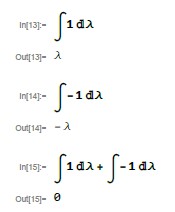FrediFizzx wrote:@Gordon You missed the whole point of my argument. Bell never defines the A and B functions other than equal to +/-1. So, substitute the +/-1's and you have nonsense.
Bell requires A and B to take values +1 and -1 as a, b and lambda vary. Obviously, for any a, b and lambda, A(a, lambda) is equal to just one of the possible two values, and B(b, lambda) too.
He requires rho to be nonnegative and integrate to 1.
Bell proves that whatever you take the functions A, B and rho to be, subject to those constraints, you’ll not be able to match the singlet correlations and singlet expectation values.
There are many proofs. Bell (1964) was the first one. Soon came CHSH with a different proof, some years later Gull with a very different one. There are yet more proofs since there are lots more Bell-type inequalities; and there are other arguments too. E.g. Lucien Hardy’s proof.
It is great that people keep trying out new ideas but I don’t give them any real chance at all.



